A restored 1919 industrial loco makes its debut
Posted by Chris Graham on 20th September 2024
Peter Love reports on the dedication of a 1919 industrial loco at the Richmond Light Railway near Headcorn, Kent, following its restoration.

Pixie is back and performed perfectly on Saturday, 6th July. (Photo: Peter Love)
In blustery, showery conditions at 11am at the Richmond Light Railway, near Headcorn, Kent, on July 6th, the ex-Rev Teddy Boston industrial saddle tank No. 2090 that is so well-known throughout the world, came good again after a fastidious and highly professional restoration. It was dedicated by Rev. David Jones – with a Welsh name like that it seemed appropriate that he should be asked to give the dedication even if this Bagnall did not work in Wales, but quite a bit of the restoration was carried out there at the Ffestiniog Railway’s Boston Lodge works.
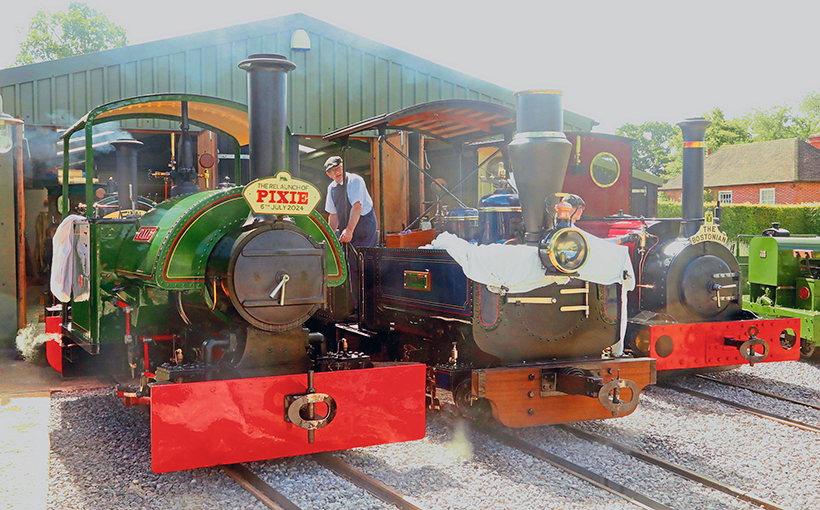
While on shed a smoke haze descended as the sun shone through the clouds for some moments. (Photo: Peter Love)
The restoration had been lead by Jeremy Martin who has created his wonderful 2ft gauge narrow gauge railway in his extensive garden and with his many volunteers has created something so good that it is capable of raising lots of money for charity thanks to his team’s efforts, particularly through the August open day here. If you love steam and narrow gauge railways in particular this is a place you need to visit, do make a date and visit especially as Pixie has joined the immaculate fleet of engines here which all go as well as they look. See Facebook for the events here.
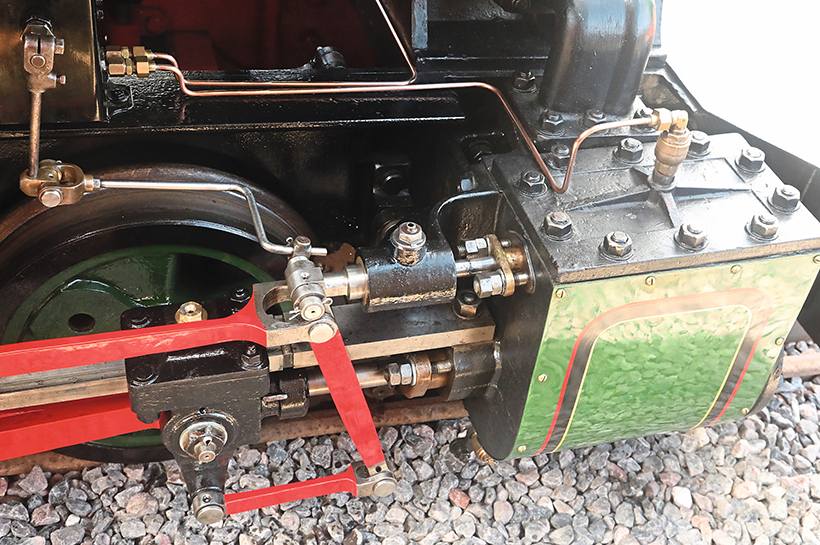
Most of the Walscharts valve-gear had to be replaced which involved new castings and more. (Photo: Peter Love)
With drinks all in hand, the 80 or so people gathered around with Jeremy Martin on the footplate making an excellent speech where he said the following: “Thank you all for making the effort to come to the relaunch today, it’s quite a special occasion to mark the return to steam of this iconic little British steam engine. It has played a large role in narrow gauge railway preservation history, through its first preservation owner, the Rev. Teddy Boston who was good friends with Rev. Awdry who wrote the famous Thomas The Tank Engine books. Secondly, due to the railway at Cadeby being one of the early private preservation initiatives of the 1960s, a whole generation of people were exposed to industrial narrow gauge steam for the very first time, with a number of you being here today. We feel very privileged to have Pixie as part of the collection here at Richmond.
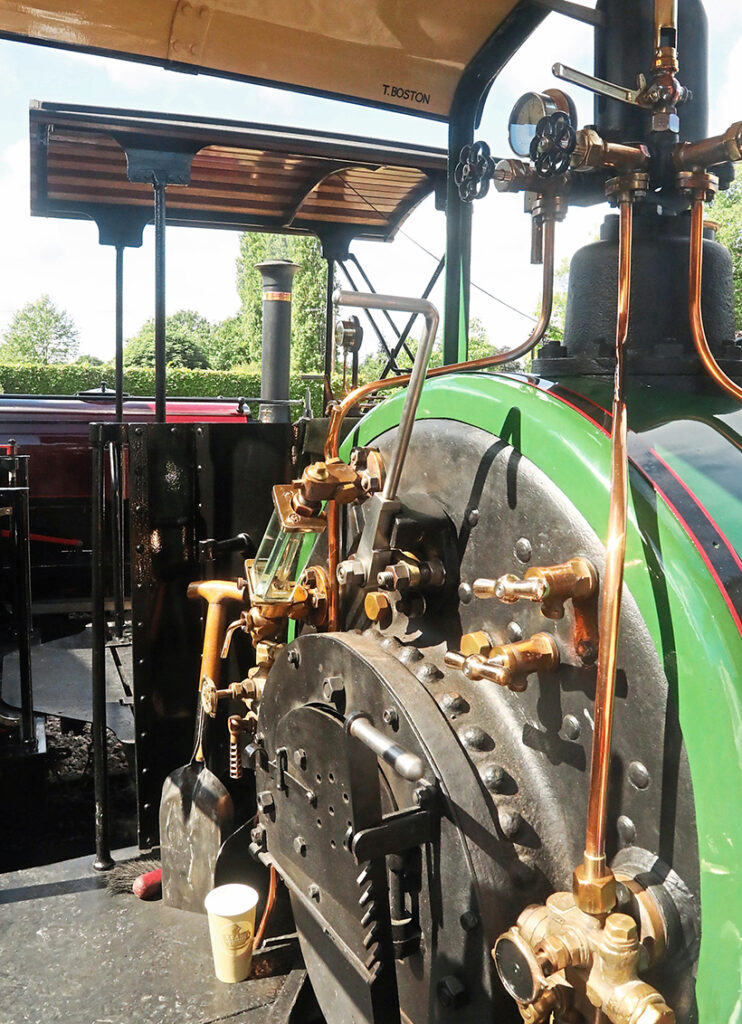
The footplate of the Namchick class Bagnall is relatively simple. (Photo: Peter Love)
“The engine was built in 1919 by WG Bagnall Ltd and the engine first worked for Staveley Minerals Ltd assisting in the construction of Pilton Quarries, Rutland. In the years that followed, it moved between quarries at Pitsford and Cranford, Northampton. In the early 1960s the Reverend Teddy Boston became rector of All Saints’ Church, Cadeby, Leicestershire. Boston was a lifelong railway enthusiast and wanted to build a miniature railway in his new garden, but the cost proved prohibitive. Instead, he searched for a full-sized narrow-gauge locomotive. In 1962 he was able to purchase Pixie for less money from the Cranford quarry owners Byfield Ironstone Co Ltd based at West Bridgeford, Nottingham (there is correspondence with the production manager of the company W Davenport which was on show at the event). The quarry owners donated a short length of track and two wagons and the Cadeby Light Railway was opened.
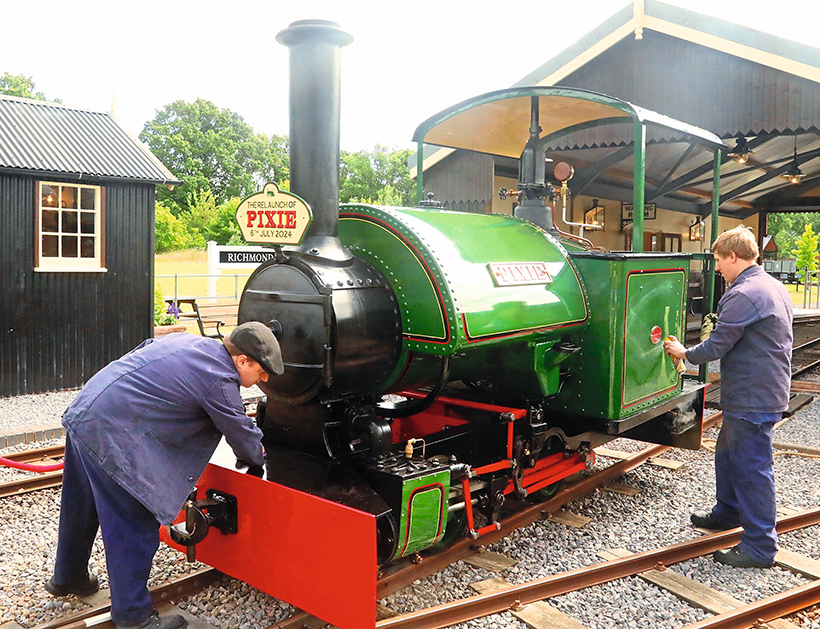
More cleaning with the smokeless coal being very effective here. (Photo: Peter Love)
“Over the years, Boston built an extensive collection of ex-industrial narrow-gauge rolling stock which ran on the short line in his garden.
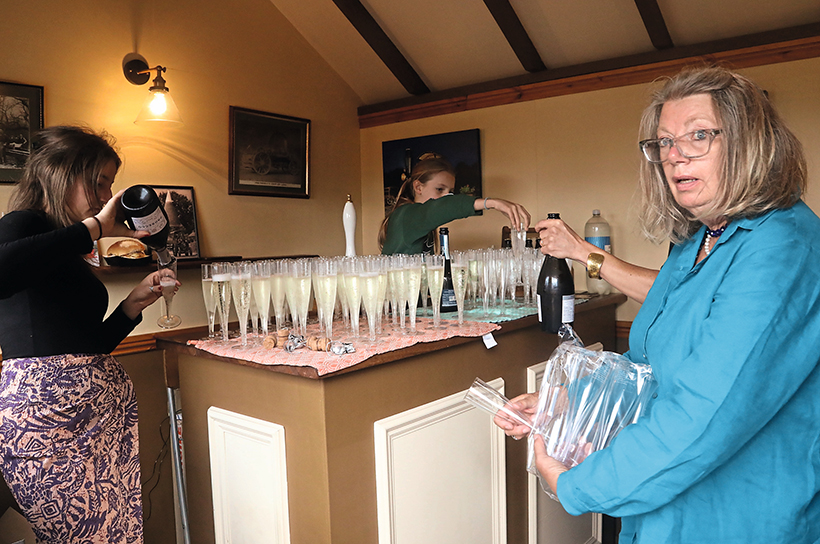
The bubbly is got ready for the toast. (Photo: Peter Love)
“Pixie is held in great affection by many railway enthusiasts thanks to Teddy’s welcoming and encouraging persona. Teddy’s close friend was the Rev. Wilbert Awdry, creator of the Thomas The Tank Engine books and he was immortalised in the famous stories when Awdry depicted themselves as ‘The Thin Clergyman’ and ‘The Fat Clergyman,’ Teddy being known as the latter.
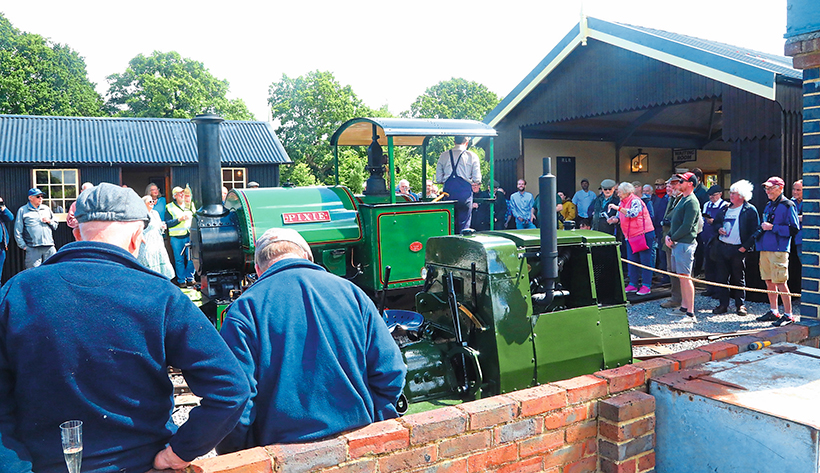
Everyone gathers together for the dedication of the famous Pixie who takes it all in. (Photo: Peter Love)
“The Cadeby railway finally closed in 2005; subsequently most of the collection was amalgamated with the Moseley Railway Trust at the Apedale Community Country Park. Pixie was then sold to Rob Gabril. She had last steamed in 2006 before being stripped for assessment and purchased from Rob by the Richmond Light Railway in 2019. I thank you Rob for agreeing to part with her (Rob was at the event).

Pixie’s engine shed at Cranford quarry for many years. (Photo: Jeremy Martin collection)
“Pixie has been one of our more complex overhauls to date, even though it was a complete engine, at our time of purchase it had been completely stripped and in addition almost every component was worn beyond further use or was damaged. We wanted to return her to as-built condition while retaining as much as possible of the original parts, the work was undertaken ranging from new cast chimney and saddle tank through to axle boxes and bearings.
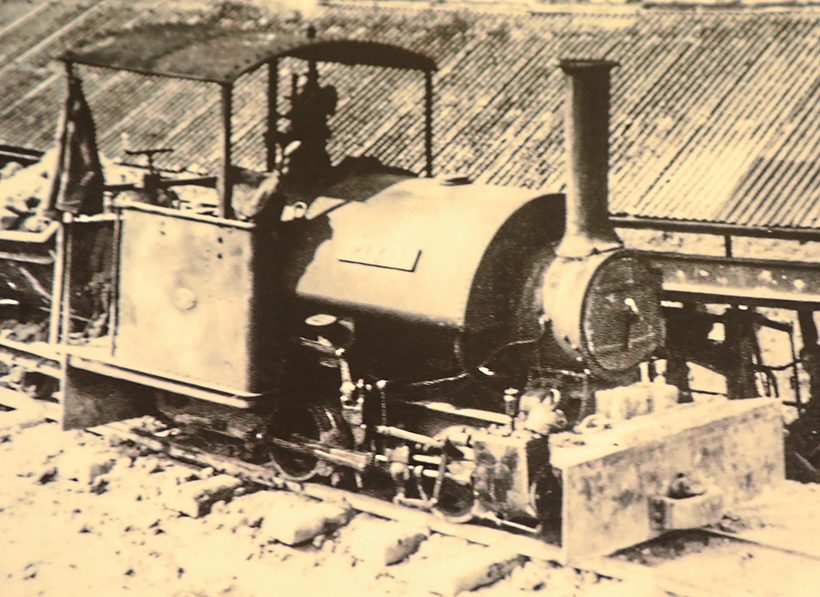
At the tippler with the trucks ready to be tipped and crushed. (Photo: Jeremy Martin collection)
“This restoration would not have been possible without the dedication and input from a large number of people, and my father and I would like to thank a few of the key people (there are many more so I am sorry if I can’t thank you all!). Firstly, the Ffestiniog team lead by Paul Lewin and Dylan Ham, with Keith Bide who undertook the main bulk of the mechanical work, with Glenn and his team completing the painting. A couple of notable jobs were the new chimney and smokebox with patterns made by Alan Frodsham. The Goddard’s boiler work and lastly the home team led by Roger Luck and Tony Baker, for various patterns, machining and painting.”
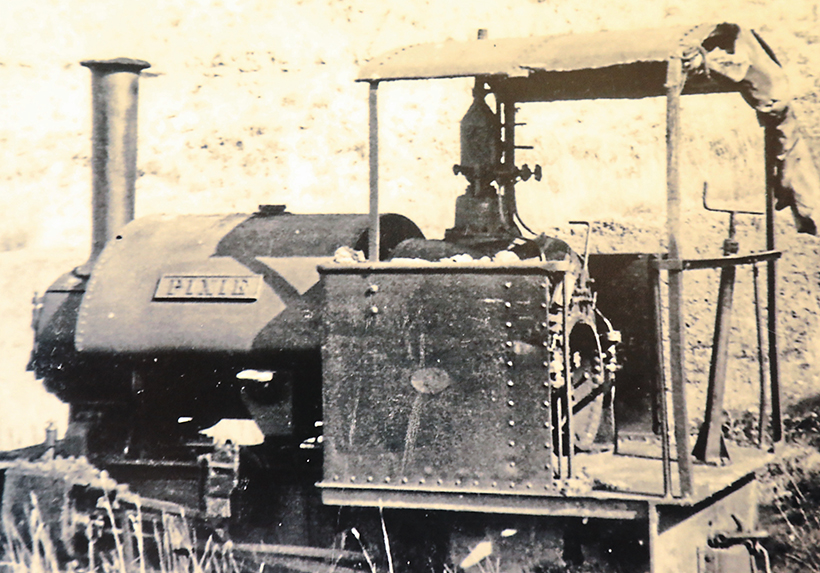
Worse for wear, but still working; Pixie has been well photographed in the post WW2 era. (Photo: Jeremy Martin collection
Jeremy’s finishing words were that he hoped that the engine was good for another 100 years. He handed over to the Rev. David Jones just as the safety valves rose on Pixie. The Rev. Jones made a humorous speech and talked about engines having a soul and everyone agreed they do! He then walked around to the front of the engine. Here over the front coupling he finally after several attempts broke the bottle of Beards bubbly on the front coupling of Pixie.
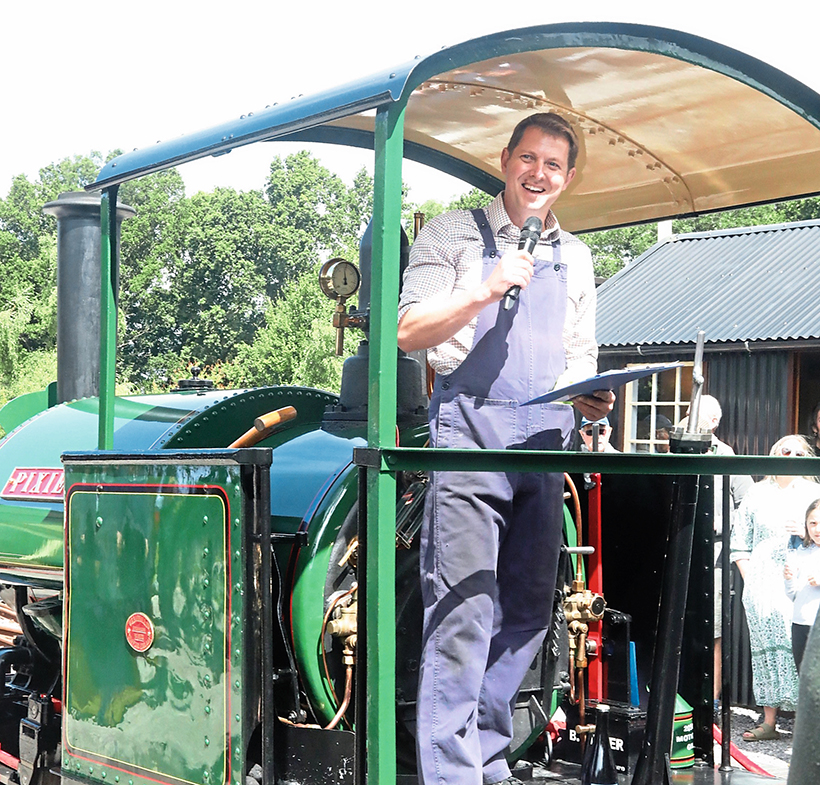
Jeremy gets down to his welcome and introduction to Pixie. (Photo: Peter Love)
After the dedication the audience was invited to take a seat in the open wagons and carriages for a triumphant trip around the extensive track system. This included a happy couple who had been married on the engine by Teddy Boston over 48 years ago now. Jeremy’s last words on the engine were: “So, we hope she will be around for another 100 years,” which was just wonderful to hear in this day and age.
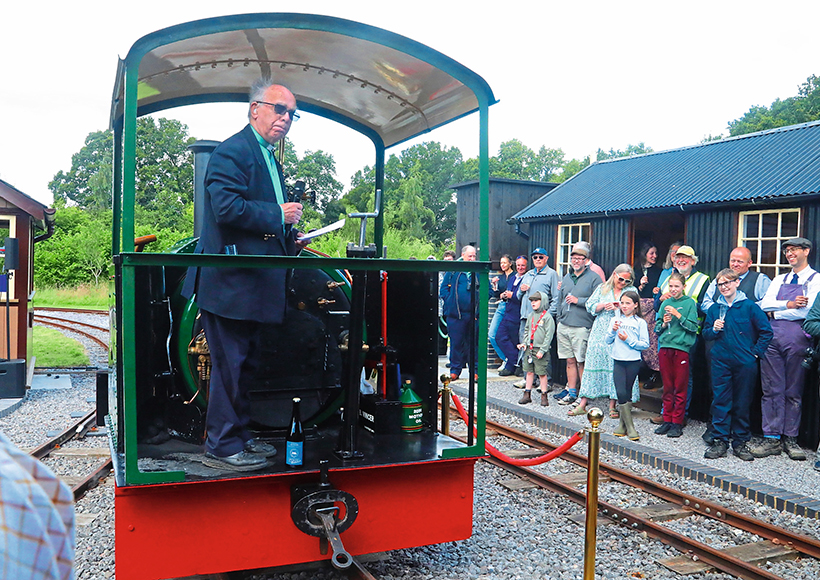
Rev. David Jones talked about being individual and having a soul. (Photo: Peter Love)
With everyone aboard the guard blew his whistle and with Jeremy on the footplate the wonderful Bagnall went about its business as if it was an everyday occurence. It steamed out of the immaculate station and on to its new life with the ease and comfort that these Bagnall engines always show; they are nothing but class, but perhaps that’s just my opinion. It was a very relaxed event made up of genuine enthusiasts who spent many hours enjoying the engines and of course Pixie.
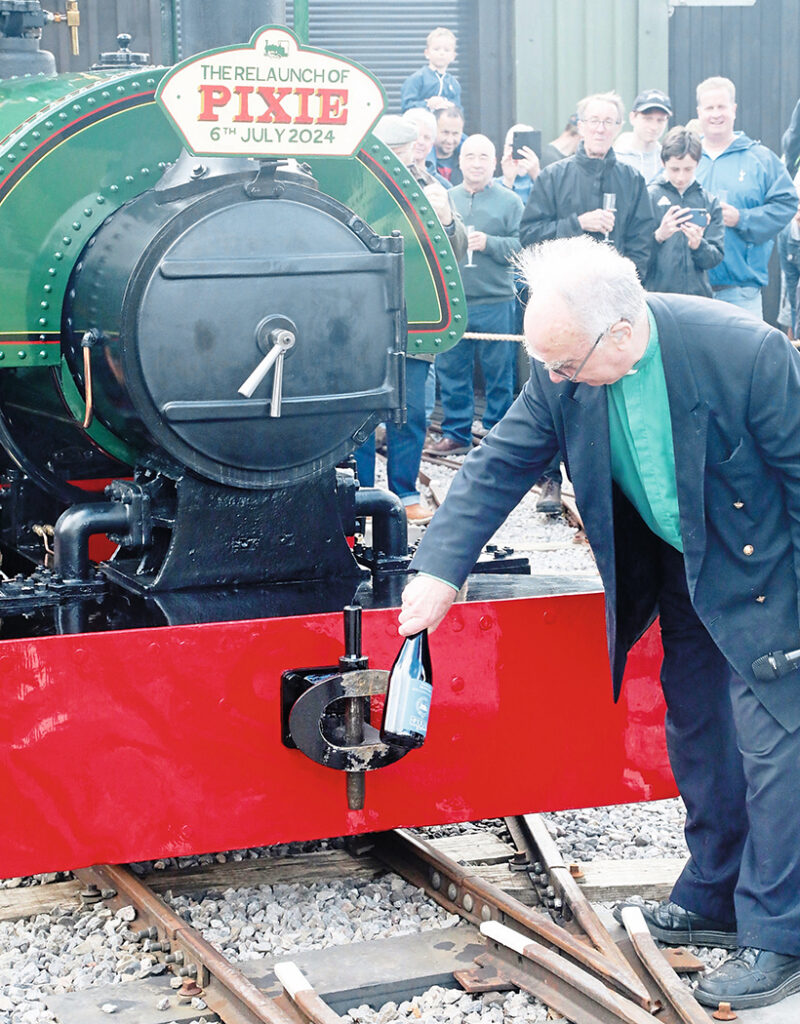
Doing the business at the front end. (Photo: Peter Love)
Extra details
Pixie is part of the Bagnall Namchick class with Walscharts valve-gear with 6in x 9in cylinders, weighing 5 tons 10cwts and features a water bottom firebox. It was in May 1962 that Teddy Boston bought the engine and set about building a light railway in the grounds of the rectory at Cadeby. It was U-shaped, with a total length of 110 yards, and the line opened on 7 April 1963 and carried its first passengers a month later.

That first train is away with no fuss or bother with 1922 Aveling & Porter C-type No. 10399 of the Hazlehurst’s joining in the fun. (Photo: Peter Love)
In 1967, Boston bought from Lilleshall Hall an i/c narrow gauge locomotive, No. 1695, which he had seen working at Lilleshall when he was young. After standing idle for 27 years, it was moved to Cadeby on 6 May 1967. There, 1695 was renamed The Terror, in reference to Psalm 91, “The Terror that walketh in darkness,” as the engine was so hard to start that it could be dark before it was going!
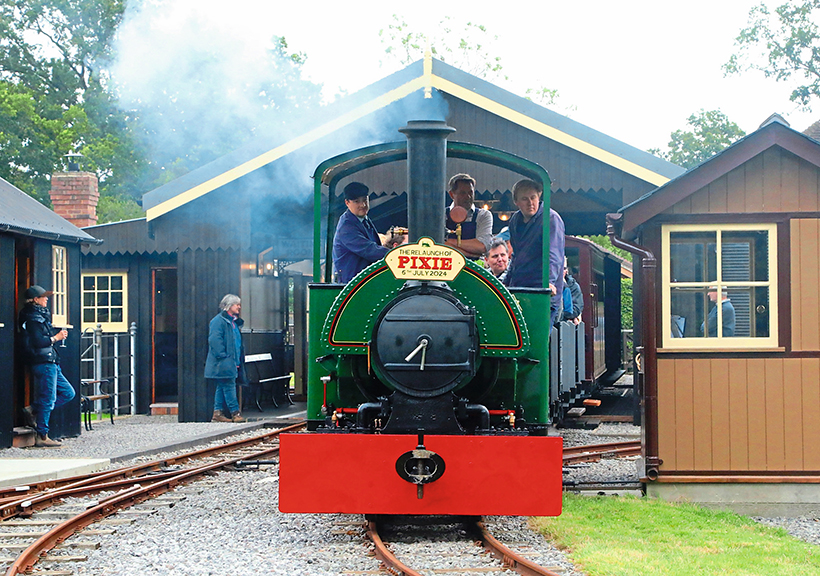
On the second circuit Pixie tours through the station non-stop. (Photo: Peter Love)
On site was a large wooden shed which housed a very extensive OO gauge model railway depicting the pre-war Great Western Railway period – this was well documented in the model railway periodicals of the time. The building also contained a separate, smaller 4mm scale, 12mm gauge (pioneering for its time) narrow gauge layout, based on the Isle of Man Railway and featuring Eames kits. Teddy also owned a canal narrowboat which had an N gauge model railway on board, narrow boats being an interest of his wife, Audrey who he married in 1978.

Over the bridge with the pond well filled with water. (Photo: Peter Love)
Boston liked to attend steam rallies, and in 1963 he founded the annual Market Bosworth Steam Rally. The idea had sprung to mind that if we could not get to a rally, why could a rally not come to us? Therefore the Market Bosworth Rally was conceived and born, becoming a regular two-day annual event held at Cadeby in August. This has proved a great success and also a considerable help with parish funds. He of course owned 1927 Foster 8hp traction engine No. 14593 Fiery Elias.

City of Rochester watches on as Pixie makes good progress with its inaugural train. (Photo: Peter Love)
It was said he was a parish priest first and a steam enthusiast second. He never forced religion on anyone, but his sincere faith and devotion was there for all to see, coupled with his impish sense of humour. The rectory was full of Boston’s railway collections. The walls were covered with shelves bearing model railway locomotives and rolling stock. In every room, the collection overflowed onto the floor, and it continued up the stairs, including a comprehensive collection of railway films on celluloid. Teddy sadly died before his time on 1 April 1986. His widow Audrey shared her husband’s enthusiasm for steam and for many years continued to co-organize the Market Bosworth Steam Rally. It’s all just history now, but Teddy did good for our hobby and people’s welfare along the tracks that’s for sure.

Nearly at the end of the line still in sunlight on that first journey. (Photo: Peter Love)
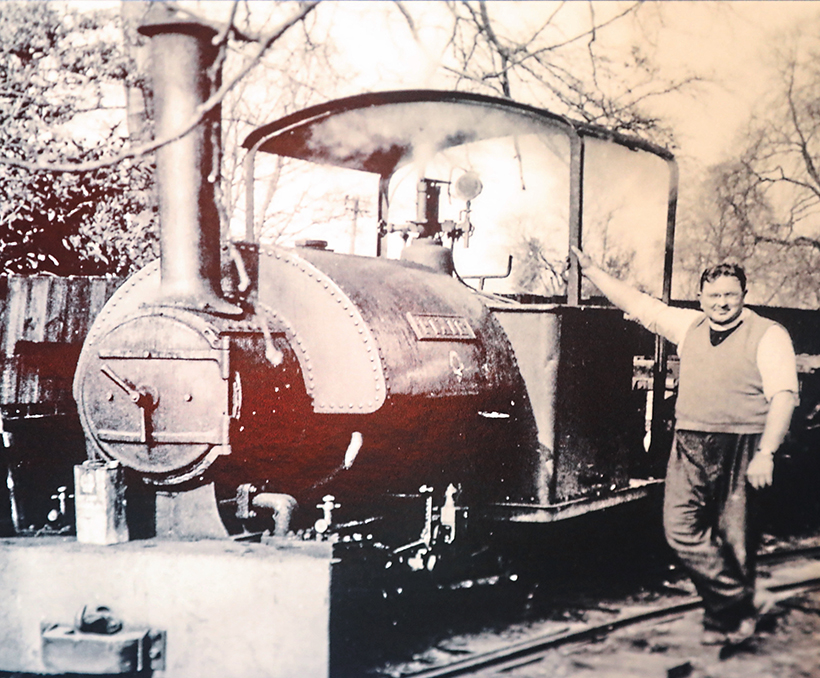
Rev. Teddy Boston with his steed blowing off and ready to head around the rectory. (Photo: Jeremy Martin collection)
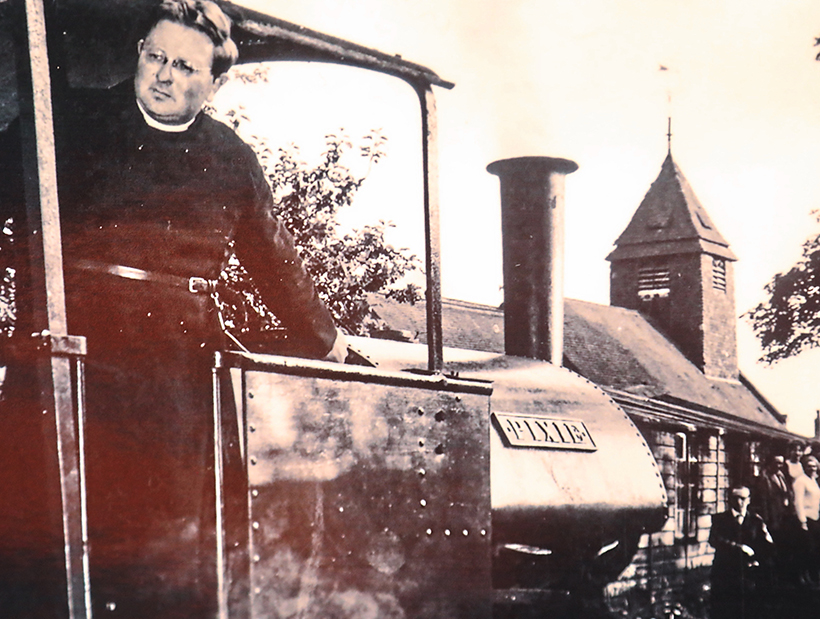
The way I remember Teddy Boston with Pixie, says the editor. (Photo: Jeremy Martin collection)
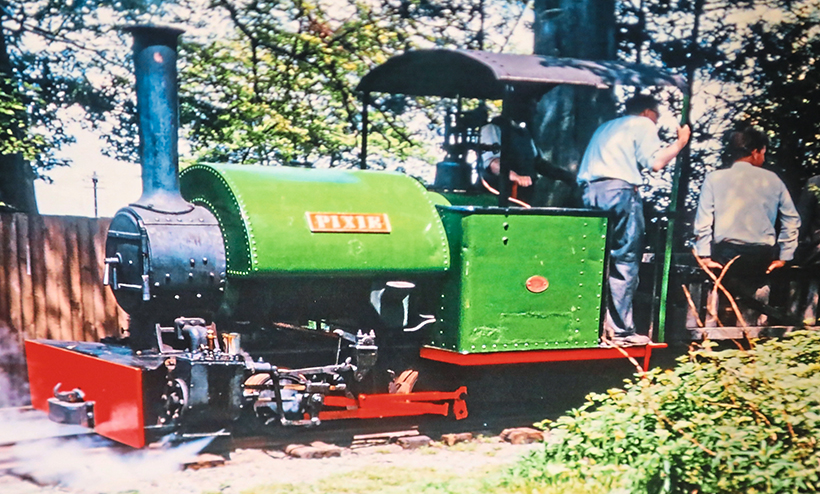
A colour shot of the engine running with Teddy on the regulator looking rather worse for wear. (Photo: Jeremy Martin collection)

The return leg of the train was split in two with the Marshall-boilered Hunslet Elin taking part one. (Photo: Peter Love)
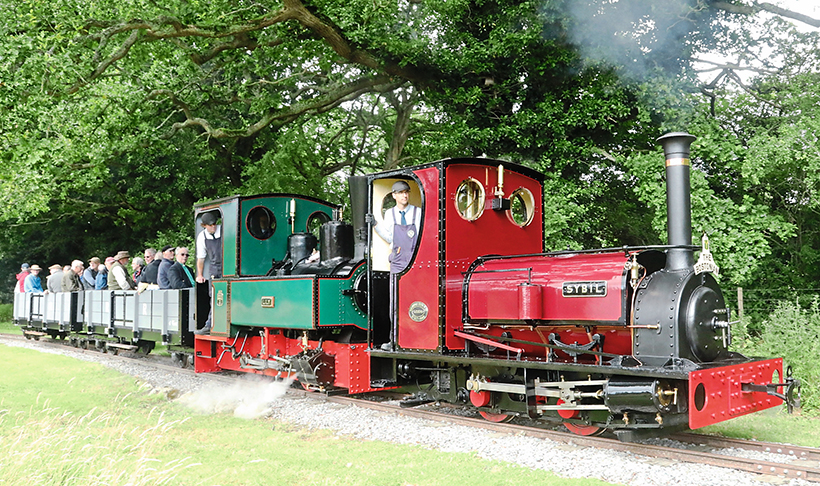
As for the second part featured a double-headed set up with Rev. David Jones in the first wagon. (Photo: Peter Love)
This feature comes from a recent issue of Old Glory, and you can get a money-saving subscription to this magazine simply by clicking HERE
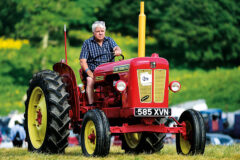
Previous Post
Great tractors at the Sussex Steam Rally
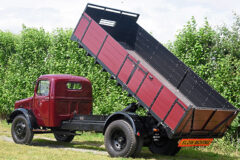
Next Post
Extremely rare 1944 Bedford OWL superbly restored



